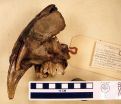Temple doctors provide commentary in New England Journal of Medicine about major weight loss study
Temple Drs. Elias S. Siraj and Kevin J. Williams co-authored an editorial piece that will be published in the July 2 issue of the New England Journal of Medicine about a major weight loss study involving obese and overweight patients
2015-07-02
(Press-News.org) Philadelphia -- Elias S. Siraj, M.D., FACP, FACE, director of the Diabetes Program at Temple University Hospital (TUH), and Kevin J. Williams, M.D., FACP, chief of endocrinology, diabetes and metabolism at TUH, co-authored an editorial piece published July 2 in the New England Journal of Medicine about a major weight loss study involving obese and overweight patients.
Siraj and Williams offered their take on the significance of the randomized, double-blind clinical trial that showed a daily injection of 3.0 mg of the drug liraglutide, when given as an adjunct to diet and exercise in non-diabetics with obesity or overweight, was associated with reduced body weight and improved metabolic control. The study, which was published on the same issue of the New England Journal of Medicine, was conducted at a large number of sites in various countries, and was led by researchers at the Obesity Research Center at Columbia University Medical Center in New York. Neither Siraj nor Williams participated in the research.
On the basis of this and similar studies, the FDA in December 2014 approved the use of liraglutide 3.0 mg daily for the treatment of obesity and selected overweight patients. "This is another approach in tackling the obesity epidemic in our country," explained Siraj. "The drug liraglutide at a lower dosage has been used for the treatment of diabetes for the last few years, and patients were noted to be losing weight while on the medication. This clinical study used a higher dosage of liraglutide in subjects without diabetes purely for weight loss purposes."
Participants in the trial did not have diabetes and were either obese or markedly overweight. Over 60 percent did have prediabetes at enrollment. Patients were either administered liraglutide or a placebo in conjunction with lifestyle counseling over the course of 56 weeks. More than 3700 participants from six continents took part in the study.
"At week 56, participants in the liraglutide group showed significant improvements," said Williams. "According to the study, participants in the liraglutide group lost a mean of 8.4 kg of body weight, as compared with a loss of 2.8 kg in the placebo group."
Siraj and Williams indicate the most common side effects in the liraglutide group were related to the gastrointestinal system and were mild. Both doctors say a slightly higher number of breast cancers were detected in the liraglutide group which will require continued attention, but they say that greater weight loss might have facilitated the detection of breast cancer.
Siraj and Williams conclude that, while the study has shown that the patients in the liraglutide group lost significant weight, liraglutide is no cure -- most obese patients who took the medication remained obese. Still, the benefits from modest weight loss can be considerable. "Fortunately, even modest weight loss of 5 percent to 10 percent makes nearly all medical issues more manageable. Modest weight loss may now be easier to achieve, but we need to await the results from studies with longer follow-up," said Siraj.
INFORMATION:
Editor's Note: Glucagon-like peptide-1 (GLP-1) mimetric liraglutide is manufactured by Novo Nordisk. Neither Drs. Siraj and Williams nor any members of their immediate family have financial interest in Novo Nordisk.
About Temple Health
Temple University Health System (TUHS) is a $1.8 billion academic health system dedicated to providing access to quality patient care and supporting excellence in medical education and research. The Health System consists of Temple University Hospital (TUH), ranked among the "Best Hospitals" in the region by U.S. News & World Report; TUH-Episcopal Campus; TUH-Northeastern Campus; Fox Chase Cancer Center, an NCI-designated comprehensive cancer center; Jeanes Hospital, a community-based hospital offering medical, surgical and emergency services; Temple Transport Team, a ground and air-ambulance company; and Temple Physicians, Inc., a network of community-based specialty and primary-care physician practices. TUHS is affiliated with Temple University School of Medicine.
Temple University School of Medicine (TUSM), established in 1901, is one of the nation's leading medical schools. Each year, the School of Medicine educates approximately 840 medical students and 140 graduate students. Based on its level of funding from the National Institutes of Health, Temple University School of Medicine is the second-highest ranked medical school in Philadelphia and the third-highest in the Commonwealth of Pennsylvania. According to U.S. News & World Report, TUSM is among the top 10 most applied-to medical schools in the nation.
Temple Health refers to the health, education and research activities carried out by the affiliates of Temple University Health System (TUHS) and by Temple University School of Medicine. TUHS neither provides nor controls the provision of health care. All health care is provided by its member organizations or independent health care providers affiliated with TUHS member organizations. Each TUHS member organization is owned and operated pursuant to its governing documents.
ELSE PRESS RELEASES FROM THIS DATE:
2015-07-02
Scientists have identified a group of genetic mutations in patients with aplastic anemia, which likely will help doctors optimize treatment for this rare and deadly blood condition. The study, appearing in the New England Journal of Medicine, could lead to tailor-made treatment plans for aplastic anemia patients as part of the emerging precision medicine movement. It is the largest study of its kind to examine gene mutations in aplastic anemia, the scientists note.
The work involved researchers from the National Institutes of Health, the Cleveland Clinic, Cleveland, ...
2015-07-01
DALLAS, July 1, 2015 -- While menopause is commonly considered a risk factor for heart disease, menopausal women had a lower risk of dying from heart attack than men; however, this difference was less pronounced among blacks, according to research in the Journal of the American Heart Association.
In the first study to compare men and women and how menopause types impact risk of heart attack, researchers studied 23,086 black and white adults over age 45 and found:
White women who had surgical-induced menopause had a 35 percent reduced risk of non-fatal heart attacks ...
2015-07-01
As we walk along a forest path, the soil beneath our feet seems like a uniform substance. However, it is an intricate network of soil particles, pores, minerals, soil microbes, and more. It is awash in variety.
Soil is a living, dynamic substance, and the microbial life within it is crucial to providing plant life with the food they need to grow. The microbes can be bacteria or fungi, but both need space--the pores--for a good living environment.
Soil particles that clump together are aggregates. These are the architectural building blocks of soil. Their presence ...
2015-07-01
Alexandria, VA - Analyzing thousands of records, researchers have reinforced the claim that for marine life, bigger has been better for the last 542 million years. The study examined Cope's rule - the idea, named for paleontologist Edward Drinker Cope, that species evolve to larger sizes over time.
With the help of undergraduate students and high-school interns, the researchers compiled information on five major marine phyla, including arthropods, brachiopods, chordates, echinoderms and mollusks. Find out how much bigger things got in the June issue of EARTH Magazine: ...
2015-07-01
New research shows that the fearsome teeth of the saber-toothed cat Smilodon fatalis fully emerged at a later age than those of modern big cats, but grew at a rate about double that of their living relatives. The findings, published today in the journal PLOS ONE and based on a new technique that combines isotopic analysis and x-ray imaging, for the first time provide specific ages for developmental events in Smilodon, notably in their teeth. The study estimates that the eruption rate of S. fatalis's permanent upper canines was 6 millimeters per month--double the growth ...
2015-07-01
Statins are a hugely popular drug class used to manage blood cholesterol levels and reduce the risk of heart disease. Previous studies had raised questions about adverse behavioral changes with statins, such as irritability or violence, but findings with statins have been inconsistent. In the first randomized trial to look at statin effects on behavior, researchers at the University of California, San Diego School of Medicine report that aggressive behavior typically declined among men placed on statins (compared to placebo), but typically increased among women placed on ...
2015-07-01
A newly-discovered, 48-million-year-old fossil, known as a "Jesus lizard" for its ability to walk on water, may provide insight into how climate change may affect tropical species, according to a study published July 1 in the open-access journal PLOS ONE by Jack Conrad from American Museum of Natural History.
Modern relatives of the Jesus lizard live in an area stretching from central Mexico to northern Colombia, flourishing in the higher temperatures found at the equator. Members of various animal, plant, fungal, and other clades currently confined to the tropics or ...
2015-07-01
An international team of researchers has found some of the first solid evidence that narcolepsy may be a so-called "hit-and-run" autoimmune disease.
The researchers sought to determine why, of two different flu vaccines widely deployed during the 2009 swine flu pandemic, only one was associated with a spike in the incidence of narcolepsy, a rare sleep disorder.
A paper describing their findings will be published July 1 in Science Translational Medicine. Lawrence Steinman, MD, a professor of pediatrics and of neurology and neurological sciences, is the senior author. ...
2015-07-01
While most Americans do not support policies designed to increase distribution of naloxone - a medication that reverses the effects of a drug overdose - certain types of educational messages about its lifesaving benefits may bolster support for its use, new Johns Hopkins Bloomberg School of Public Health research suggests.
In a report published July 1 in the journal PLOS ONE, the researchers say that combining educational messages about naloxone with sympathetic narratives about people who could have been saved had the drug been available could be key to increasing support ...
2015-07-01
Widely hailed as 'green' sources of renewable energy, hydroelectric dams have been built worldwide at an unprecedented scale. But research from the University of East Anglia reveals that these major infrastructure projects are far from environmentally friendly.
A study published today in PLOS ONE reveals the drastic effects of the major Amazonian Balbina Dam on tropical rainforest biodiversity.
The research reveals a loss of mammals, birds and tortoises from the vast majority of islands formed by the creation of the vast Balbina Lake, one of the world's largest hydroelectric ...
LAST 30 PRESS RELEASES:
[Press-News.org] Temple doctors provide commentary in New England Journal of Medicine about major weight loss study
Temple Drs. Elias S. Siraj and Kevin J. Williams co-authored an editorial piece that will be published in the July 2 issue of the New England Journal of Medicine about a major weight loss study involving obese and overweight patients


